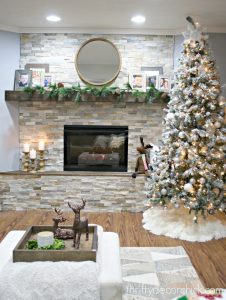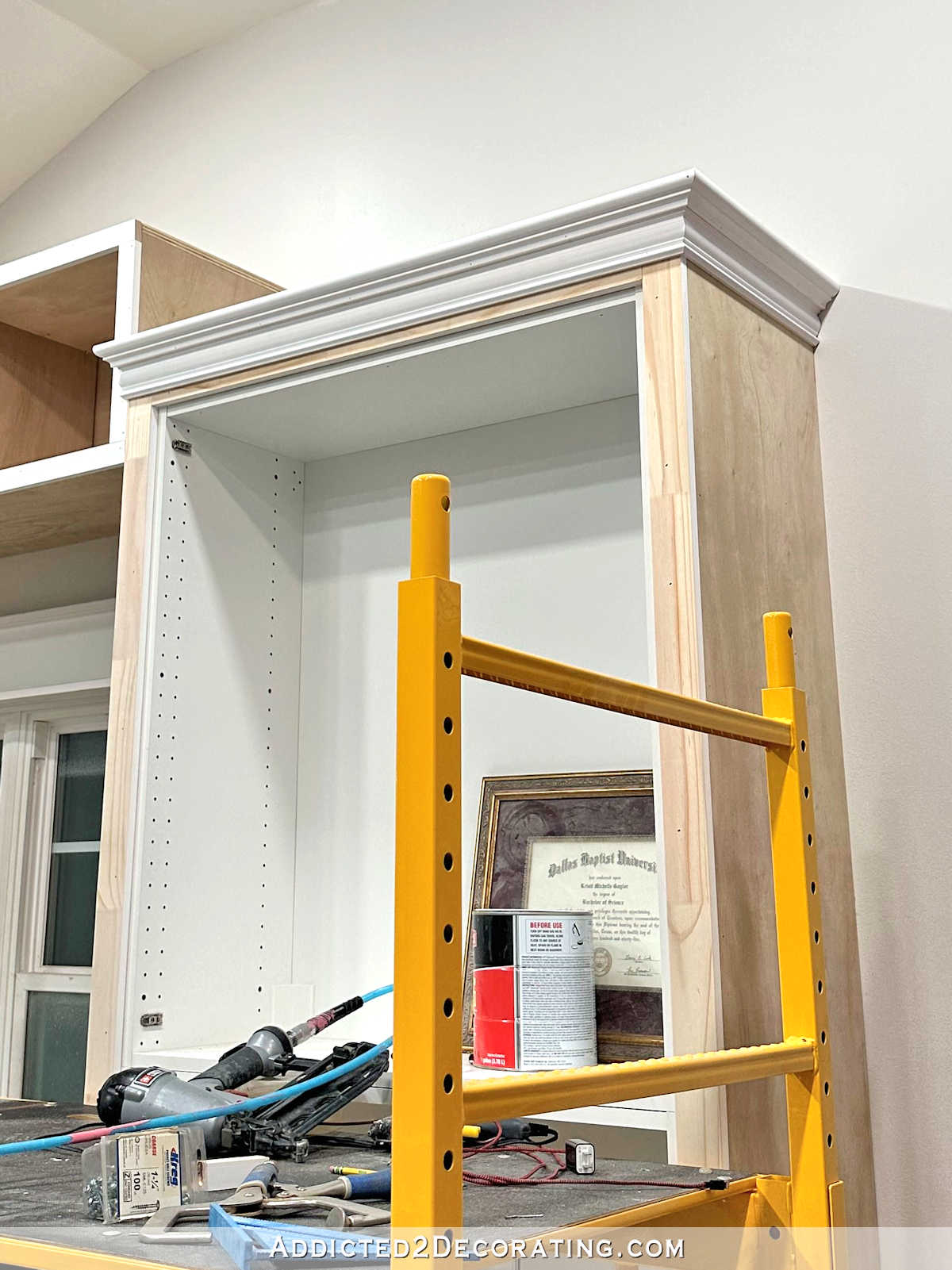
Progress is moving right along on my studio office area cabinets, and I now have all of the decorative trim attached. And rather than attaching large crown molding, I kind of cheated and used what I would call a faux crown molding that is so much easier to cut and attach than actual crown molding, and it looks just as good as actual crown molding.
So if you’ve been wanting to add crown molding to a room or cabinet, but you’ve been intimidated by the whole cutting and installing process, this will make it so much easier for you! You don’t need any fancy tools or jigs. You don’t need to know how to determine the spring angle of crown molding. Nothing like that. If you can cut and install baseboards or door casing, then you can cut and install this trim that will give you the look of a large, gorgeous crown molding without all the hassle.
Before I get to that, let me back up and remind you where I left off on this project last week. The last I showed you, I had built the cubby bridge connecting the two tall cabinets (which are IKEA Sektion cabinets that I’m working on customizing), and then I had added all of the basic trim to the cabinets. At that point, they looked like this…
And now that the decorative trim has been added, the cabinets look like this…
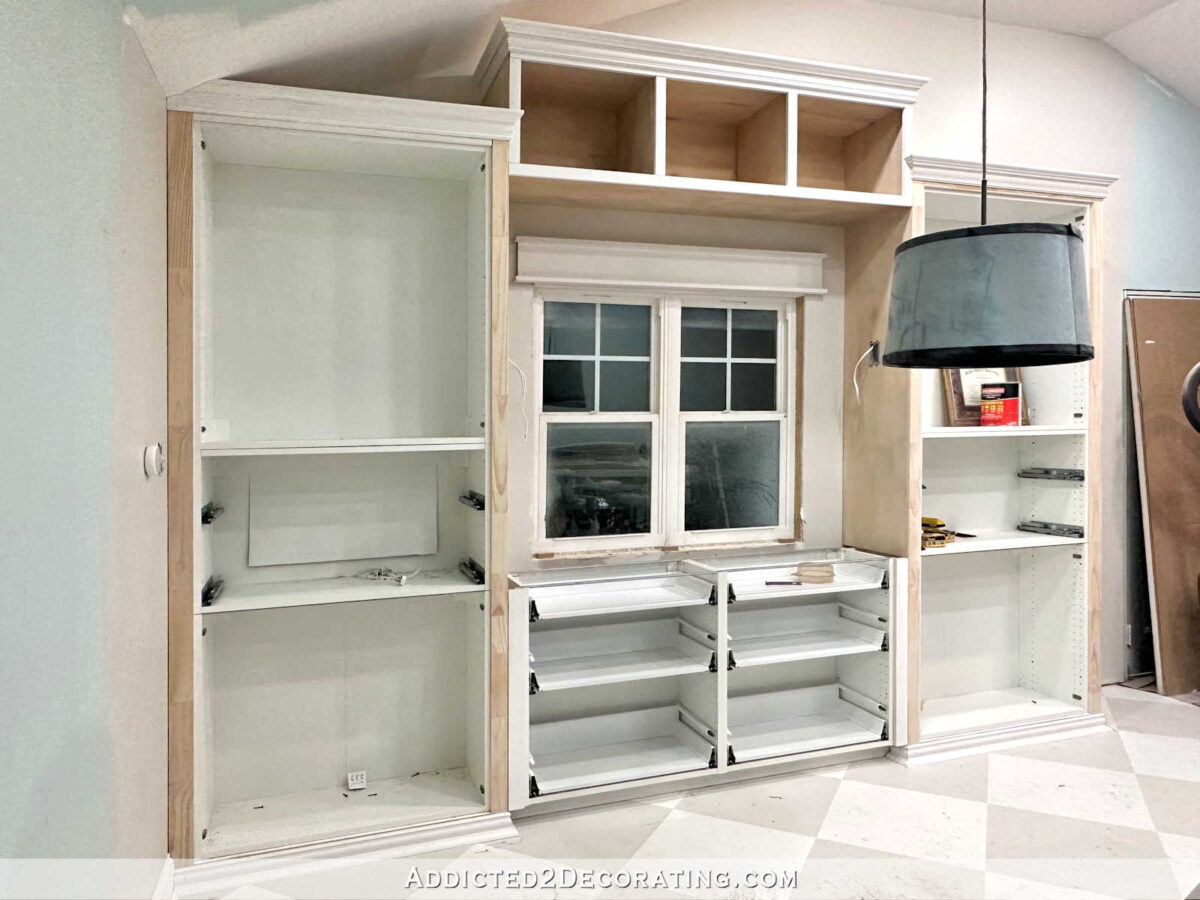
Did you take note of that fake crown molding? Would you have ever known that I cheated that look with a much easier process had I not pointed it out?

So let me show you how I created this easy-to-install faux crown molding that you cut and install just like baseboards. In order to create that look, I used a really pretty case molding (case molding is used to trim doors and windows) and the tiniest (but not the plainest) crown molding I could find. My Home Depot had two tiny crown moldings. One was very plain and one was not. I chose the one that was not.
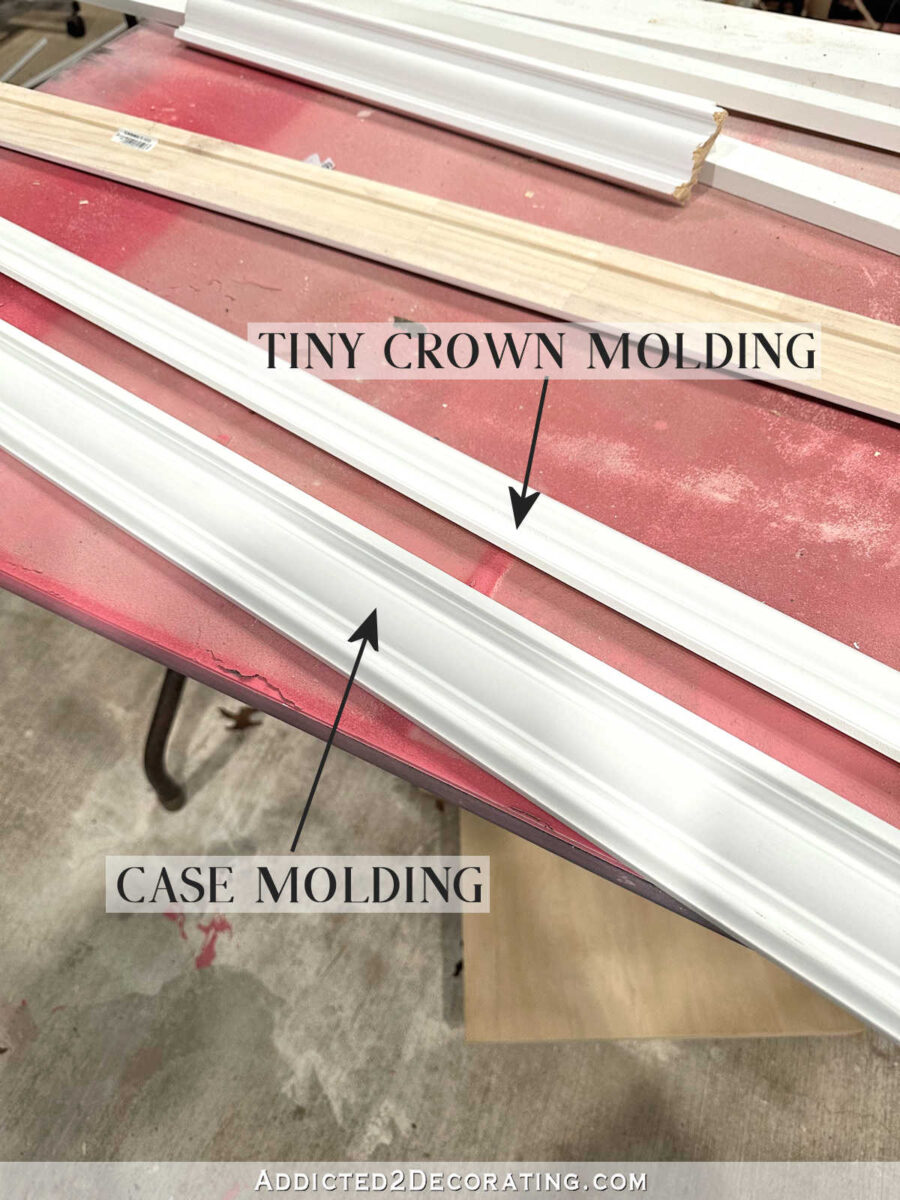
I know what you’re thinking. “Kristi, you told us this was a faux crown molding, but you used crown molding!” Yes, that’s true. But that tiny crown molding is just one small piece of the overall look. And because of how it’s used, you won’t actually need to know how to cut crown molding. Stay with me here.
What I did is I used wood glue and 5/8-inch 18-gauge brad nails in my nail gun to attach the tiny crown molding to the narrow flat area on the edge of the case molding.
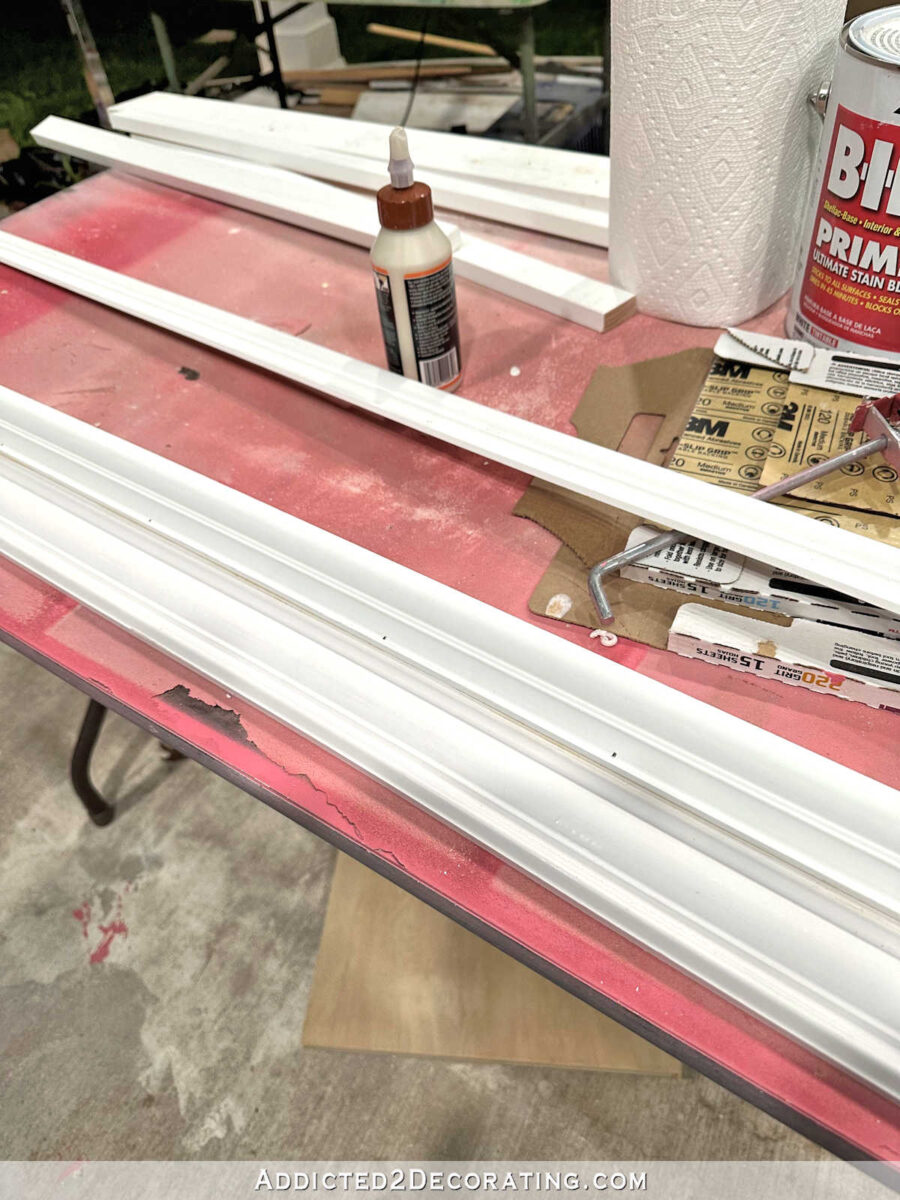
With those two pieces attached to each other, here’s what that profile looked like…

I left it alone for a while for the glue to dry, and then I was ready to cut my pieces. In order to cut, I simply turned the trim upside down, so that the tiny crown molding was at the bottom, and I made sure that the case molding was pushed flat against the fence on my miter saw.

I marked where I needed to cut (just like I was cutting baseboards), and I always put a tiny mark to remind me which direction my angle needs to be cut.

And with that case molding sitting flat against the fence, I cut on the mark.
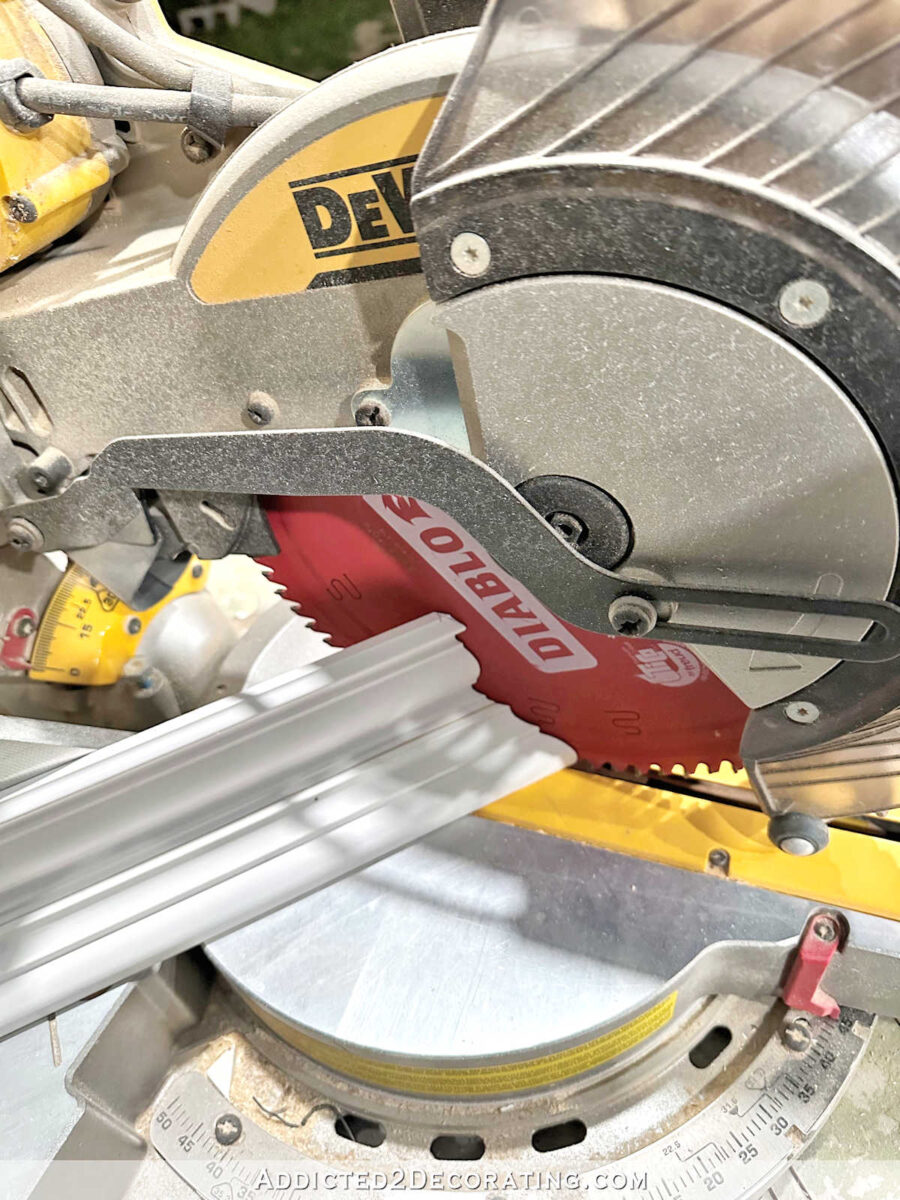
And then I turned the cut piece over, with the tiny crown molding at the top, and attached it to the cabinet using 1.5-inch 16-gauge nails.

I mean, y’all! This could not have been easier. This gives you the look of fancy crown molding while taking all of the guesswork and frustration out of cutting real crown molding.
Since I do know how to cut and install actual crown molding, and I have a Kreg Crown Molding Jig to make the process pretty easy, and I’ve installed crown molding a thousand times, you might be wondering why I chose this faux crown molding method for these cabinets.
There are two reasons. First, there really aren’t many crown moldings that I like. I tend to grab the same one over and over again. And since I’ve already used that one on the paint swatch cabinet, I wanted something different on this, but there wasn’t one I liked.
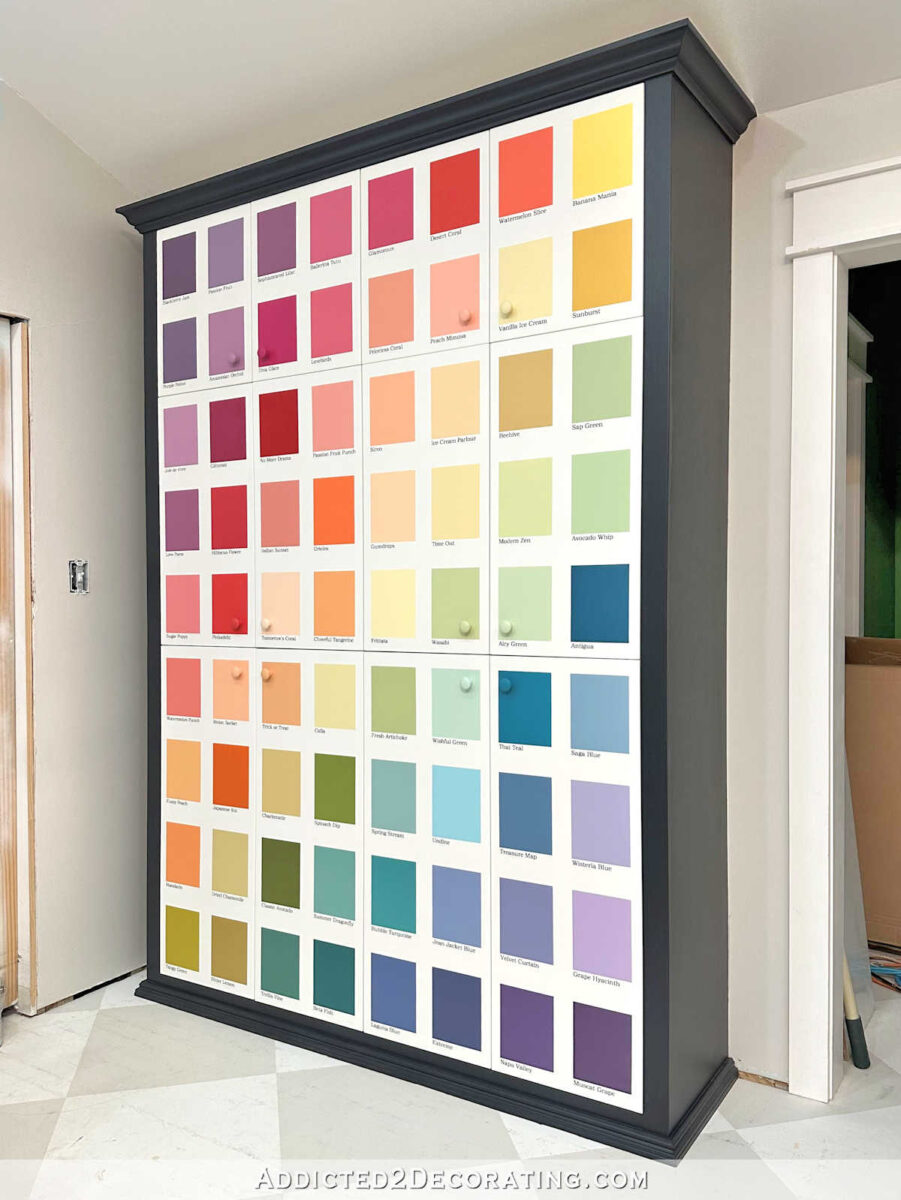
But most importantly, I was afraid that an actual, large piece of crown molding would stick out too far, causing the returns on the crown molding on these outside sections to extend past the side trim of the cubby bridge too much. So I needed a design that would give me the look of crown molding, and give me some kind of angle, without it sticking out too far. And this worked beautifully.

In my humble opinion, this looks every bit as fantastic as a solid piece of large crown molding. And it was so much easier to cut and install!
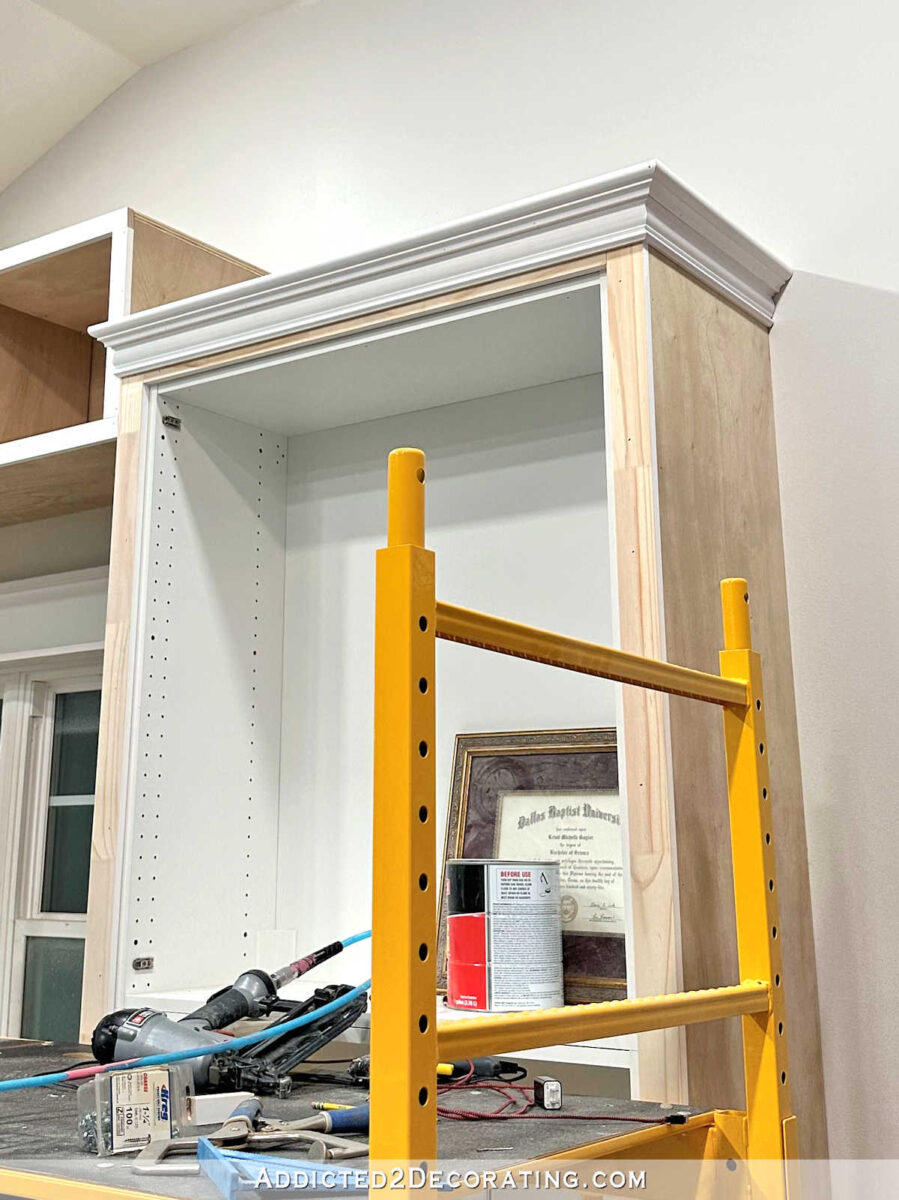
Once I was sure that my idea would work, I proceeded to do the faux crown molding on the cubby bridge in the exact same way…

The section by the wall was the hardest because I also had to cut the molding to fit under that angled ceiling. I was so proud of how precisely I cut that angle! 😀

I just love how this turned out. And I can’t wait to get it all painted!

I used the same case molding and the same process on the bottom trim, except instead of using a tiny crown molding, I attached quarter round to the molding before cutting it.

I only wrapped the bottom trim around the two outside sections of cabinets, and I left the toekick plain to match the toekick on the mural wall cabinets. I didn’t use quarter round or anything on the toekick area.

So on this section, I put the trim on the front, and then wrapped it around on that 3.5-inch return, and then stopped.

And then I repeated that on this section as well…

And then this bottom trim on this section had to wrap around this side also. This piece isn’t actually attached yet because I noticed at the last minute that I can’t attach that until the baseboard on that section is on. But I can’t attach the baseboard until that door is trimmed out. 😀 So for now, that piece is just sitting there, and it’ll have to be cut shorter after the baseboard is attached.
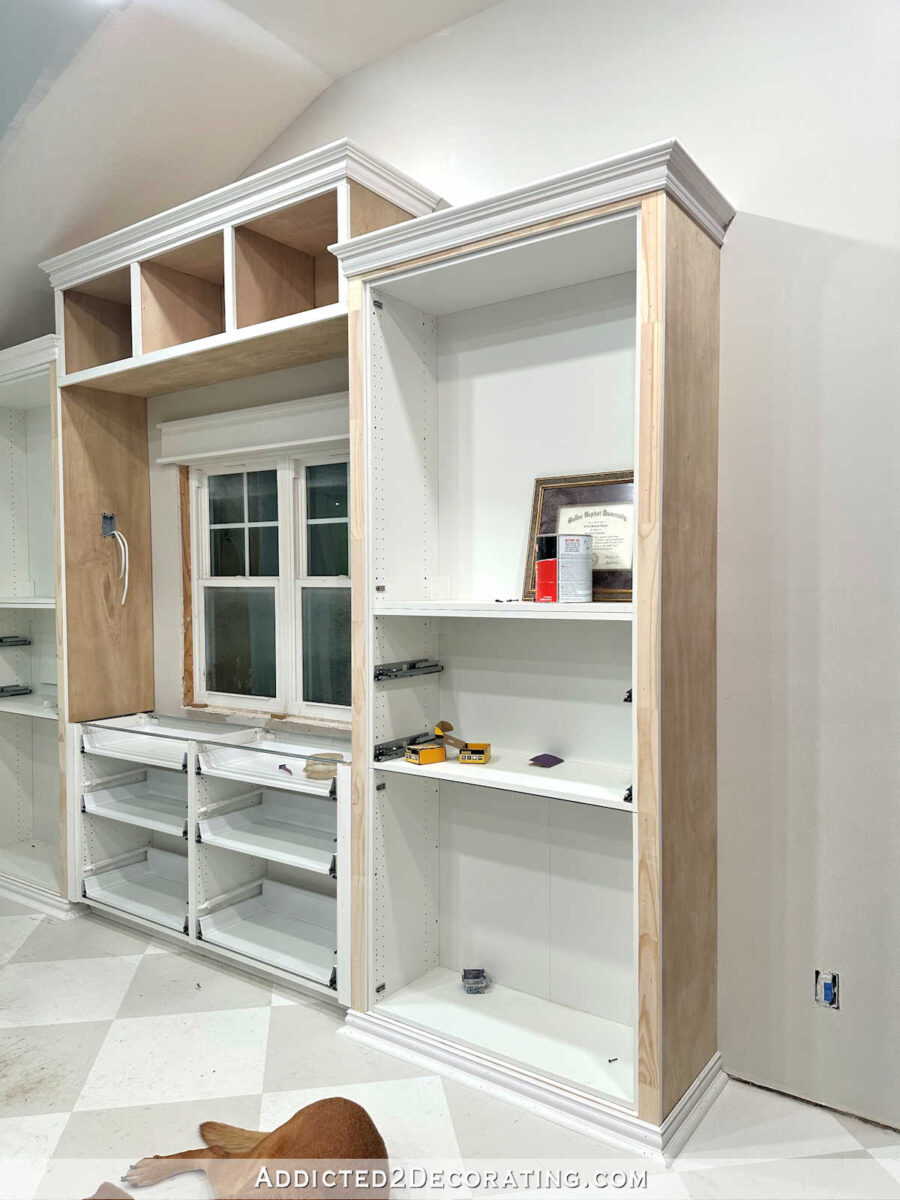
So that’s it with the trim! This whole cabinet unit is now all trimmed out and ready for wood filler, sanding, caulk, primer, and paint. I’ve still got a way to go, but I feel like the hard part is done!

Addicted 2 Decorating is where I share my DIY and decorating journey as I remodel and decorate the 1948 fixer upper that my husband, Matt, and I bought in 2013. Matt has M.S. and is unable to do physical work, so I do the majority of the work on the house by myself. You can learn more about me here.

